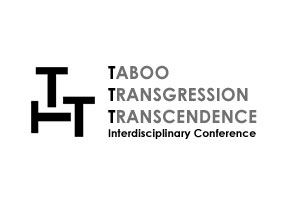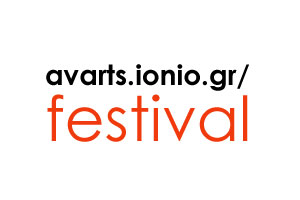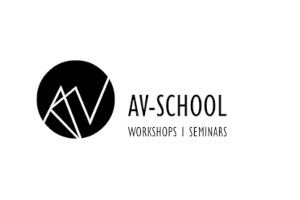Glitch Aesthetics, Punctum & Digital Decay: how memory and mortality intersect in art and technology.
This paper discusses glitch art within a context of loss, memory, and impermanence while also outlining the scope and methodology used in the analysis.
Rolan Barthes in “Camera Lucida” reflects on photography’s connection to death, exploring how the art form creates a unique “aesthetic of loss.” Photographs, and art in general, aren’t just visual images; they’re emotional time machines that can take us back to moments of joy, sorrow, love, and everything in between. The Latin counterpart of “trauma” is punctum. In his definition, Barthes describes its qualities as scattered with sensitive points that pierce and affect him.
According to Barthes, the concept of the punctum can be explored within contemporary culture. What he seeks to reveal in photography can also be examined concerning glitch art. In “Camera Lucida,” he discusses photography as the medium through which the punctum manifests. However, this idea extends beyond photography to include modern media technologies, as every medium inherently contains its glitches. Glitch art is an artistic practice that embraces digital errors, corruption, and system failures to create works that challenge our perceptions of technology, memory, and permanence. It exploits digital malfunctions—such as pixelation, compression artifacts, system crashes, or corrupted data—to produce unique visual and auditory compositions that engage the viewer in new and often unsettling ways.
In the context of digital memorialization, glitch art reveals the fragility of digital archives and how our attempts to preserve memory through technology are inherently unstable. The disrupted digital image functions as a reminder that technology, like human memory, is vulnerable to decay. Just as human memory deteriorates, digital files degrade through bit rot, format obsolescence, and server failures. Artist Rosa Menkman explores how glitches can represent fragmented or fading memories. Menkman is a key figure in glitch art, known for her theoretical and artistic explorations of digital errors. Her work frames glitches as disruptions of meaning, revealing the fragility of digital memory and how technology itself is prone to forgetting, distortion, and decay. Glitch art is applied in several connotations regarding the dissipating nature of human traits. Memory loss conditions (like Alzheimer’s) involve gaps, distortions, and failures in recall—glitch aesthetics visually replicate this process. Philip Stearns uses glitch techniques to show how personal and collective memories break down over time. “Fragmented Memory” is an art installation that explores the intersection of technology, memory, and digital decay.
The aesthetic of corrupted data functions as a wound/trauma/punctum in the digital image, an intrusion that disrupts smooth perception. Rosa Menkman and Philip Stearns’ work also ties into Barthes’ ideas about photography’s relationship with time and death. Just as Barthes sees photographs as reminders of mortality (that-has-been), their work highlights the fragility of digital information. Glitches, like the unexpected puncta in a photograph, serve as reminders of loss, technological impermanence, and the fallibility of digital archives.
Scope and Methodology
This paper examines glitch aesthetics through an interdisciplinary lens, integrating media theory, visual culture analysis, and digital art studies. The scope encompasses contemporary glitch artists, with a primary focus on Rosa Menkman and Philip Stearns, and their engagement with digital decay as a conceptual and aesthetic practice. Additionally, it situates glitch aesthetics within the broader discourse on memory, loss, and technological impermanence, drawing parallels with Barthes’ theoretical framework of punctum.
The methodology employs qualitative analysis of artistic works, theoretical discourse analysis, and comparative visual studies. Through a close reading of glitch artworks and textual analysis of relevant critical theory, the paper explores how digital malfunctions become meaningful aesthetic expressions. Key sources include Barthes’ “Camera Lucida,” academic literature on glitch aesthetics, and contemporary art critiques. Furthermore, this paper draws from digital preservation studies to contextualize the implications of digital decay and its resonance with memory and mortality in contemporary media art.
By synthesizing theoretical insights with artistic practice, this study highlights the role of technological failure as both a medium and a message, reinforcing the notion that glitches are more than errors—they are evocative markers of time, loss, and the ephemeral nature of digital existence.
References
Barthes, R. (1981). Camera lucida: Reflections on photography (R. Howard, Trans.). Hill and Wang.
Berube, J. (2019). Glitch art in theory and practice: Digital failures and post-internet aesthetics. Routledge.
Cascone, K. (2000). The aesthetics of failure: "Post-digital" tendencies in contemporary computer music. Computer Music Journal, 24(4), 12–18.
Hansen, M. B. N. (2004). New philosophy for new media. The MIT Press.
Menkman, R. (2011). The glitch moment(um). Institute of Network Cultures.
Shanken, E. A. (2015). Contemporary digital art and glitch aesthetics. Leonardo, 48(4), 322–329.
Stearns, P. (2013). Fragmented Memory [Installation]. Retrieved from https://philipstearns.com
Maria Athanasekou is an Art Historian, a graduate of the Athens School of Philosophy with postgraduate studies in Art History at the University of London, and a PhD from the School of Architecture and Engineering of the National Technical University of Greece. She teaches at the Hellenic Open University and Frederick University. She has taught at the Department of Early Childhood Education (TEAPI), UOA, at the School of Philosophy, Department of History and Archaeology, UOA, the University of the Aegean, the University of Western Macedonia, ATEI of Thessaloniki and other universities. She is a member of the European research group COST Action as the representative of Greece in the action “Perinatal Mental Health and Birth-Related Trauma” (DEVoTION) CA18211.
She lectures on Art History topics in various institutions and participates with papers in international conferences. Her work has been published in scientific journals, and she has written chapters in books. Additionally, her books have been published in both print and electronic formats. Her scientific interests are various, and she always combines them with a focus on art, therapy and education. She has further training in Art Therapy, Children Drawing, Digital Education, Special Education, Psychology, Neuropsychology, etc., and is a certified adult educator.
Her approach to art is interdisciplinary as she borrows from sister sciences, aspiring to create a relationship between students/trainees and art. She loves to communicate through images and believes that art has great power and stories to tell us. Many, if not all, concern us or will concern us at some point in our lives as our existential field expands.
Back





